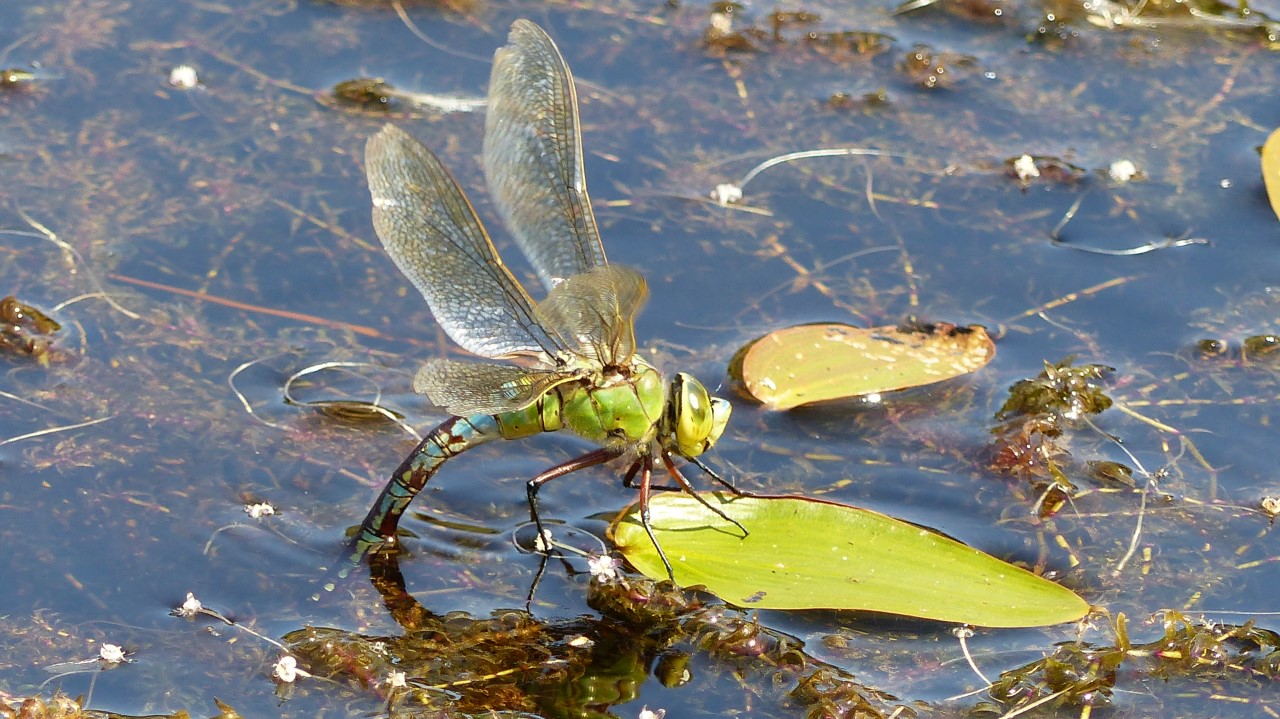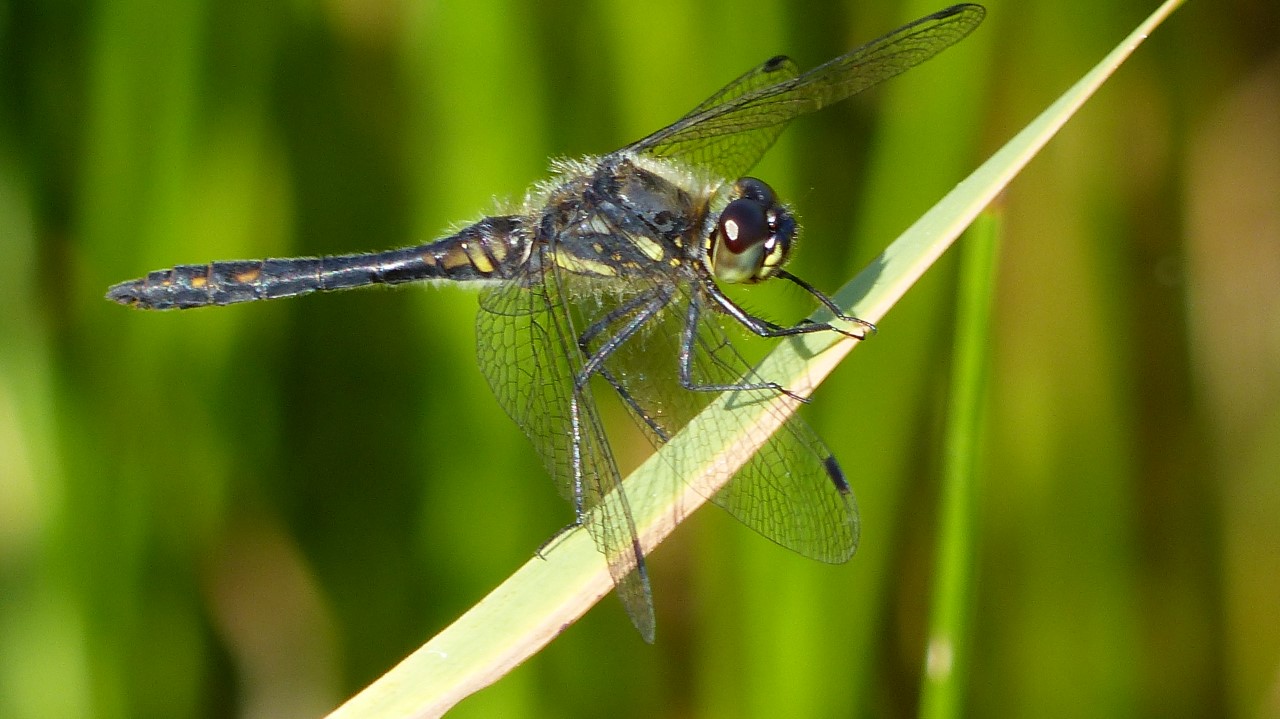2022 has been an amazing year for Dragonflies at Gosforth Nature Reserve. Local naturalists, Elaine and Ian Burnell share their summer sightings.
On 14 August, we decided to have a couple of hours at GNR in the morning. The couple of hours we intended to stay turned into 7. Time flies when you’re enjoying yourself.
As we regularly survey for British Dragonfly Society and Durham Wildlife Trust for dragonflies we headed straight to the two large dragonfly ponds. We were not disappointed. We spotted 10 species of Dragon/Damselfly.
These included:
- Emperor
- Southern Hawker
- Migrant Hawker
- Common Hawker
- Four-spotted Chaser
- Common Darter
- Black Darter
- Common Blue Damselfly
- Emerald Damselfly
- Blue-tailed Damselfly
Out of these not only was Britain’s largest dragonfly, the Emperor Dragonfly, egg-laying but also our smallest dragonfly, the Black Darter which is amazing. We only saw our first Black Darters at GNR last year and this year they are settled in and very actively breeding. Six of the other species were observed either coupled up or egg laying.

Emperor Dragonfly © Ian Burnell 
Black Darter © Ian Burnell
Last week we observed Small Red-eyed Damselflies egg-laying at Washington Wetlands. They first appeared in Britain in 1999, in Essex, and are gradually spreading north and west. They were first seen in County Durham just 2 years ago. The two large ponds at GNR are ideal breeding sites as they like to lay their eggs in floating vegetation and algae. We searched yesterday to no avail, but it is only a matter of time before they appear.
GNR is a dragonfly hotspot and we were really pleased that during the drought whereas other ponds have dried up GNR ponds still have a good supply of water. The ponds at GNR are brilliant and it is great that they are accessible. We once spent time sitting by one of the ponds watching a Common Darter larva crawl from the water up a piece of vegetation then break out of it’s larval skin. It eventually, after 3.5 hours, took it’s maiden flight leaving the exuvia behind. They are so vulnerable at that stage of their life but it is amazing to watch how they transform from larva into one of the most agile of aerial predators. Dragonflies are such beautiful and fascinating insects.
The reserve is brilliant place to see a variety of wildlife and an excellent place for folks to unwind from the stresses of modern day life and meet likeminded people.